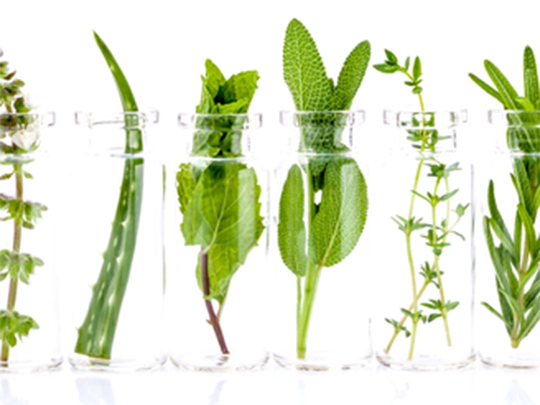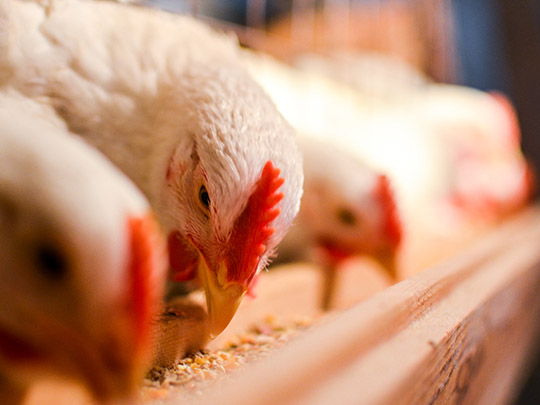Emission reduction in poultry by PFAs
The livestock sector is growing fast. It is the answer to the steadily growing population and the thus rising demand for animal derived food products. Though, meat production in animal farming is accompanied by considerable environmental pollution with nitrogenous emissions and greenhouse gases - undesired compounds that impact our climate and need to be mitigated.
Challenging
Next to humidity, ammonia (NH3) is one of the biggest challenges in poultry farming, as it may lead to odor nuisance and fine dust formation. To avoid this, it is crucial to tackle the problem at the root and address it at the feeding level of animals.
Promising additives of plant origin

Over the last decades, many feed additives have been developed and evaluated to support emission reduction, within which phytogenic (plant-based) substances have attracted more and more attention for a good reason.
Plants have been used in human culinary and medicine for centuries as flavor enhancers, preservatives, and healing properties. Phytogenic feed additives (PFAs), also called "phytogenics," are standardized, specific, and science-based combinations of bioactive compounds found in plants with proven efficacy and a sustainable impact on animals, people, and the environment.
As such, PFAs are promising ingredients in a natural strategy to face todays and future livestock production challenges, including emissions. In the broad spectrum of beneficial effects of phytogenics, emission reduction is achieved through increased nutrient utilization in animals, leading to reduced nutrient excretion, and thus, lowering the environmental pollution.

PFAs mitigate emissions
Delacon has performed many trials in its own Performing Nature Research Center (PNRC, Znojmo, Czech Republic) to determine the effect of PFAs on ammonia emission in broilers, and the results were promising, making phytogenic feed additives a crucial tool for keeping pace with current and upcoming trends and meeting today and tomorrow's challenges
If we've made you curious and you'd like to read the full article on emission reduction in poultry, published in January 2022 in the feed & additive magazine, please click below.

Roberto Montanhini Neto
Veterinary doctor, with MSc. and Ph.D. in veterinary sciences, and with relevant experience in leading integrations, premix and feed additives companies. With more than 18 years of experience in the Brazilian and international markets, always focused on developing animal nutrition and feed production projects, especially poultry, swine and aquaculture. Has been working for Delacon since 2018, and currently holds the position of Global Unit Lead, Monogastric.










